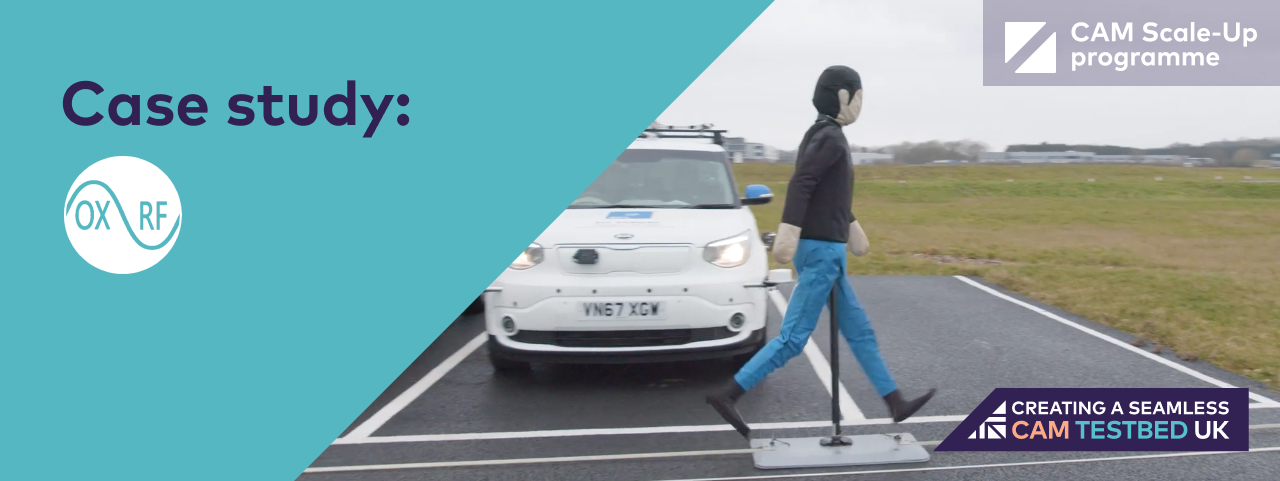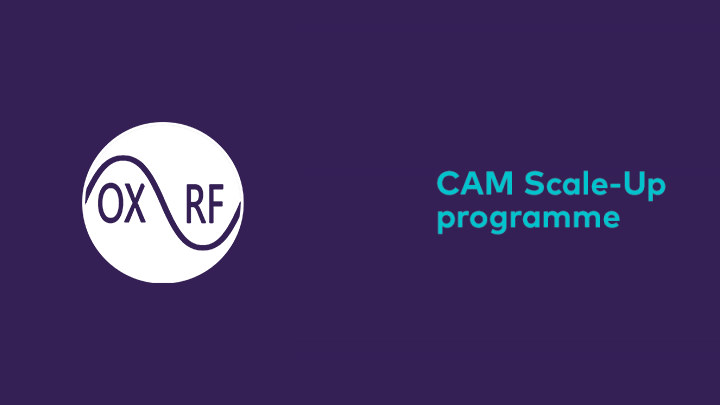



Oxford RF and the Zenzic CAM Scale-Up Programme
Designing a next-generation radar sensor that enables autonomy in all visibility conditions

Oxford RF is developing a unique, next-generation radar sensor for ADAS and autonomy that creates a 360º safety bubble around vehicles, creating more efficient collision prevention detection for a fraction of the cost of current technologies.
Oxford RF is made up of a team of award-winning sensor designers, spearheaded by CEO Dr. Kashif Siddiq. Having looked at the market, the Oxford RF team felt that most sensors used in connected and automated vehicles were not originally designed with those vehicles in mind. Instead they had been adapted and ‘bolted on’ to vehicles and therefore were not an optimum solution. The Oxford RF team started from the perspective that there was a huge market need for a purpose-built sensor. The key issues they set out to address were:
- Cost – a high priority for OEMs. They need affordable, reliable collision prevention systems that can be easily integrated into a wide range of vehicles.
- Quantity – currently the sheer number of sensors required for a vehicle to be deemed safe could be 20+, and this does not account for the second layer of redundancy. For example, back-up sensors in case a sensor on a vehicle were to fail in an ADAS setting, or even a third failsafe layer of redundancy in a fully autonomous context. In many cases, taking this conventional approach means that the combined cost of sensors is greater than the cost of the vehicle to which they are attached.
- Sustainability – there are clear implications for power consumption. It follows that such a high number of sensors requires significant comms and power to connect them, which has a negative effect on the power required to run the vehicle.
What makes Oxford RF special?
Kashif explains:
The key innovation at Oxford RF sees us move away from the traditional radar and LiDAR system’s need for rotating components to achieve a 360º view of the surrounding environment. Instead, we have developed the world’s first solid-state 360º sensor that uses its proprietary antenna on top of the sensor panel. It enables us to achieve full-range coverage without any of the moving parts.”
Oxford RF’s innovation will reduce the number of sensors required on a conventional ADAS vehicle to four and just eight for autonomy. By developing a solid-state sensor that is able to scan 360º (although mostly it would be limited to 270º if the sensor is attached to the corner of the vehicle), they are able to provide a vehicle with the capacity to look at the same scene from slightly different perspectives. This then offers overlapping coverage with just four sensors mounted on a conventional ADAS vehicle. The upshot of this technology is that Oxford RF is able to address OEMs’ primary concern of price by producing its sensor for an estimated cost of just £500.
Oxford RF’s journey of evolving and applying its sensors begins with off-highway vehicles, focusing on construction. This will enable the team to prove the concept at comparatively low risk.
Oxford RF’s testing journey
Evaluating their radar’s robustness and future-proofing their technology through CAM Testbed UK

The first step of testing saw the team at Oxford RF explore the key legislative and regulatory requirements that relate to their sensor. The landscape is evolving and this helped Oxford RF ensure that it is able to meet legal and industry needs and also develop a roadmap for the likely evolution of the sensor.
The team then installed its sensors on an AVL, a member of the Midlands Future Mobility testbed, vehicle. Initially they integrated the Oxford RF sensor into AVL’s car in order to test whether they could successfully read data from the sensor. The next stage of testing introduced actors/obstacles to pass in the way of the sensors (dummy vehicles, pedestrians, cyclists, etc.) to see if the sensors passed the information to the vehicle and the brakes were applied in a timely manner. A framework for defining and evaluating the success criteria was developed against a full range of real-world scenarios that was then recreated in the test environment.
What would success look like?
Oxford RF hopes that the Zenzic CAM Scale-Up programme will provide a springboard, enabling the team to carry out testing in an authoritative environment that’s validated independently. It will also offer Oxford RF an added layer of credibility in conversations with OEMs.
“Oxford RF was set up with the vision to become the leading manufacturer of low-cost sensor solutions for the ADAS market. In the future we would like to see our sensors installed globally in a range of vehicles from e-scooters to industrial trucks and everything in between. On top of that we would like our sensors to be OEMs sensor of choice for autonomous vehicles.” – Dr. Kashif Siddiq
Programme results
Oxford RF’s testing programme has resulted in business success across three core aspects.Quantify
Participating in the CAM Scale-Up programme has enabled Oxford RF to test the efficacy of their sensor’s performance.
Optimisation
By having the opportunity to gather a wealth of data, Oxford RF were able to optimise their sensor’s operational effectiveness.
Development
Accessing the facilities at CAM Testbed UK provided Oxford RF the ability to test their sensors and in turn has accelerated their development.
More SME case studies

Connected Collision Management Platform empowering Automotive organisations to deliver transformational customer and claims experiences

Calyo is developing the next-generation AI-enabled perception system that offers an unprecedented combination of high performance, flexibility and low cost for smart mobile robots and autonomous vehicles.

High density urban passenger & freight transport at half the cost/space/time and highest passenger convenience

Eloy is a connected and autonomous vehicle software business focused on multi-vehicle coordination. Our software includes patent pending methods for orchestrating how human-driven and autonomous vehicles travel.

Leading the way in road scape and highways information.

PolyChord is a spinout from Cambridge University Astrophysics with uniquely powerful data science technology.
Find out more about the
CAM Scale-Up programme
discover more

Talk to us
Want to talk about connected and automated mobility in the UK and see how Zenzic can help you?
{{ teamMember.name }}
{{ teamMember.title }}
